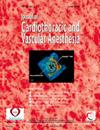心脏手术术后吗啡毫克当量的预测因素
IF 2.3
4区 医学
Q2 ANESTHESIOLOGY
Journal of cardiothoracic and vascular anesthesia
Pub Date : 2024-08-23
DOI:10.1053/j.jvca.2024.08.029
引用次数: 0
摘要
鉴于阿片类药物的短期和长期有害影响,人们越来越重视减少术后阿片类镇痛药物的使用。由于接受心脏手术的患者术后通常需要大量阿片类药物,因此了解术后阿片类药物使用增加的风险因素可能有助于为这类患者制定针对特定患者的阿片类药物镇痛方案。我们对电子病历和胸外科医师协会数据库中的数据进行了回顾性分析。这是一项在学术医疗中心进行的单机构研究。纳入了所有接受开放式成人心脏手术的患者。排除标准是持续静脉滴注麻醉剂和手术死亡率高的患者。由于这是一项回顾性研究,因此没有对参与者进行干预。患者术后阿片类药物需求数据来自电子病历。术后第 0 至 3 天的阿片类药物总用量通过标准换算系数换算成吗啡毫克当量(MME)。研究对象包括1604名患者,其中包括456名女性和1066名冠状动脉旁路移植术(CABG)受术者。在术后第0至3天,接受CABG手术的患者的MME增加了31.0%(p < 0.001),肝病患者的MME增加了76.3%(p = 0.005),患者自控镇痛患者的MME增加了48.8%(p < 0.001)。 年龄越小(p < 0.001)、体重指数(BMI)越高(p < 0.001)也与MME处方量增加有关。CABG、肝脏疾病、患者自控镇痛、年龄较轻和体重指数较高与心脏手术后麻醉药用量增加有关。对于这些患者群体,应考虑实施更积极的围手术期多模式阿片类药物保留治疗方案。本文章由计算机程序翻译,如有差异,请以英文原文为准。
Predictors of Postoperative Morphine Milligram Equivalents in Cardiac Surgery
Given both the short- and long-term deleterious effects of opioids, there has been an increased focused on reducing the use of postoperative opioid analgesia. As patients undergoing cardiac surgery often require high levels opioids postoperatively, understanding risk factors for increased postoperative opioid use may be helpful for the development of patient-specific opioid-sparing pain regimens for this patient population. A retrospective analysis of data from our electronic medical records and the Society of Thoracic Surgeon's database. A single-institution study at an academic medical center. All patients undergoing open adult cardiac surgery were included. Exclusion criteria were patients with continuous intravenous narcotic drips and operative mortality. As this was a retrospective study, no interventions were conducted on the participants. Data for patient postoperative opioid requirements were extracted from the electronic medical record. Total opioid use on postoperative days 0 to 3 was converted to morphine milligram equivalent (MME) via standard conversion factors. The study cohort comprised 1604 patients, including 456 females and 1066 coronary artery bypass grafting (CABG) recipients. MME was 31.0% greater in patients undergoing CABG (p < 0.001), 76.3% greater in patients with liver disease (p = 0.005), and 48.8% greater in patients with patient-controlled analgesia (p <0.001) during postoperative days 0 to 3. Younger age (p < 0.001) and higher body mass index (BMI) (p < 0.001) also were associated with increased MME prescription. CABG, liver disease, patient-controlled analgesia, younger age, and higher BMI are associated with increased narcotic use after cardiac surgery. Implementation of more aggressive perioperative multimodal opioid-sparing regimens should be considered for these patient groups.
求助全文
通过发布文献求助,成功后即可免费获取论文全文。
去求助
来源期刊
CiteScore
4.80
自引率
17.90%
发文量
606
审稿时长
37 days
期刊介绍:
The Journal of Cardiothoracic and Vascular Anesthesia is primarily aimed at anesthesiologists who deal with patients undergoing cardiac, thoracic or vascular surgical procedures. JCVA features a multidisciplinary approach, with contributions from cardiac, vascular and thoracic surgeons, cardiologists, and other related specialists. Emphasis is placed on rapid publication of clinically relevant material.

 求助内容:
求助内容: 应助结果提醒方式:
应助结果提醒方式:


